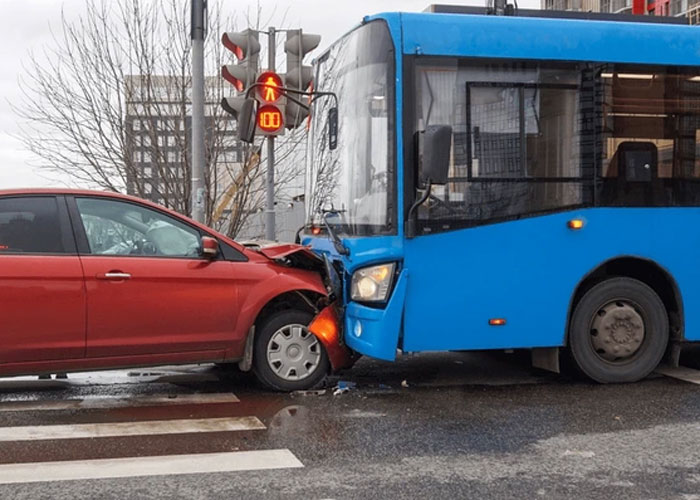Gearing Up for Survival: The Importance of Proper Motorcycle Safety Equipment
Riding a motorcycle can be an exhilarating experience. Feeling the wind in your hair as you cruise down an open highway is a one-of-a-kind thrill. However, motorcycles also come with serious risks that car drivers don’t face. Motorcyclists are far more vulnerable on the roads and in the event of an accident. That’s why proper motorcycle safety equipment is absolutely crucial for any rider who wants to make it home safe. This article will explore the key types of motorcycle safety gear and explain why they are so important.

Helmets
The most vital piece of safety equipment for motorcycle riders is a quality helmet. According to the NHTSA, helmets are estimated to be 37% effective at preventing fatal injuries to motorcycle riders. Simply put, helmets save lives. Here’s a closer look at why helmet use is so critical:
Prevent Head Injuries
The head is incredibly vulnerable in any motorcycle crash. A helmet provides padding and protection to help absorb force and prevent traumatic brain injuries. The outer shell of the helmet helps distribute impact forces over a broad area so that they are not concentrated in one spot. The inner liner provides critical cushioning. Together, these components offer life-saving protection for the head and brain.
Face Protection
Helmets do more than just protect the top of your head. Full face helmets protect the entire head, including the chin, cheeks, and jaw. This helps prevent painful and disfiguring facial injuries in the event of a crash. The clear face shield provides protection for the eyes and nose as well.
Stay Securely Fastened
For maximum protection, helmets must stay secured to the head in the event of an impact. High quality helmets feature straps that buckle securely under the chin and will not come loose even during a violent collision. This keeps the helmet firmly in place when you need the protection most.
Proper Fit
An often-overlooked aspect of helmets is ensuring a proper fit. A helmet that is too large will not stay in place and offer full protection. One that is too tight can be uncomfortable and distracting. Take the time to carefully measure your head and select the size recommended by the manufacturer. The cheek pads should touch the cheeks without compressing them too much. There should be no gaps between your temples and brow and the interior padding.
Regular Inspection
It’s also critical to regularly inspect your helmet for any signs of damage, cracking, loose parts or padding, frayed straps, etc. If there are any deficiencies, it’s time to replace it with a new helmet. They are designed for one major impact and should not be reused after a significant collision.
Protective Clothing
Helmets protect the head, but motorcycle riders need specialized clothing to help protect the rest of the body as well. This includes jackets, pants, gloves, and footwear.
Abrasion-Resistant Materials
The right motorcycle gear is constructed from materials that will slide rather than tear if you go down. Leather, Kevlar, and Cordura are common choices. They provide an outer shell that resists abrasion, preventing road rash and reducing injury. Thick leather is optimal for sliding protection.
Injury Cushioning
Quality motorcycle jackets, pants, and suits also have protective padding built in. This cushioning acts like an airbag to absorb impact and prevent serious bruising, fractures, and internal organ injuries in the event of a crash. Padding is often found on the shoulders, elbows, back, hips, and knees.
Weather Protection
Motorcycle gear provides other benefits beyond impact protection. Leather, textile jackets, and pants help protect riders from wind, rain, and cold weather. This improves comfort and makes it easier to ride safely in varied conditions. Proper gloves also keep hands warm and dry while padding protects the hands, wrists, and fingers from injury.
High Visibility
Bright colors and reflective materials are also key. These help make motorcycle riders more visible to surrounding motorists. Being seen on the road is critical for avoiding collisions in the first place.
Layer for Comfort
Don’t forget to layer clothes under motorcycle outerwear as well. A long-sleeved shirt and pants provide an extra layer of protection. Synthetic moisture-wicking fabrics help keep you cool and dry by wicking away perspiration. Layering allows riders to remove or add items as conditions change.
Boots
Most motorcycle riders wear sturdy over-the-ankle boots for protection. Here’s how the right footwear contributes to safety:
Ankle Support
Sturdy motorcycle boots stabilize the ankle and provide impact absorption. This support helps prevent painful sprains or fractures if the ankle is struck in a crash. Riding shoes without ankle coverage offer far less protection.
Slide Protection
Boots crafted from leather or other abrasion-resistant materials provide slide protection as well. This prevents painful road rash burns on the feet and lower legs when skidding across the pavement. Materials that shred or tear apart easily leave the lower extremities exposed.
Grip
The soles of quality motorcycle boots are designed to interlock with foot pegs, providing a good grip so feet don’t fly off at inopportune moments. They have oil-resistant, non-skid soles for stability when stopped at lights or walking around parked.
Shin Protection
Many motorcycle boots also incorporate rigid shin plates. These help prevent impact injuries to the shin bone (tibia) and calf during a collision. Unprotected lower legs are very vulnerable to painful fractures and trauma.
Waterproofing
Water-resistant boots with good insulation keep feet warm and dry in inclement weather. Dry feet have better grip and are less likely to slip off the controls. Proper insulation also helps prevent hypothermia during long rides in the cold.
Give Yourself a Fighting Chance
Motorcycle safety gear provides the best defense against debilitating injuries and improves the odds of surviving an accident. Don’t let an ounce of prevention outweigh a pound of cure. Investing in a quality helmet, jacket, pants, boots, and gloves will help you get home safely after a ride. Compromising with inferior gear is simply not worth the risk.
If you’ve been injured in a motorcycle accident that was caused by another motorist’s negligence or unsafe road conditions, contact our firm today to discuss your legal options. Proper safety equipment is just the first step – holding responsible parties fully accountable is the next. You deserve justice and compensation for what you’ve endured. Our experienced motorcycle accident attorneys are here to help.
Visit our offices at:
- 7176 Hodgson Memorial Drive, Savannah, GA 31405
- 320 East Clayton Street, Athens, GA 30601
- 197 14th St. NW, Suite 200, Atlanta, GA 30318
- 110 Traders Cross #226, Okatie, SC 29909
Or call now for a free consultation on (800) 529-1441.
Ready to Talk to a Lawyer Who Has Your Back?
Contact The Brown Firm
Get the Answers and Compensation You Deserve
You’ll notice the difference when you contact The Brown Firm! Our local dedicated attorneys want to help you recover and rebuild.
Schedule your free consultation by calling (800) 529-1441 or completing our simple online form.


